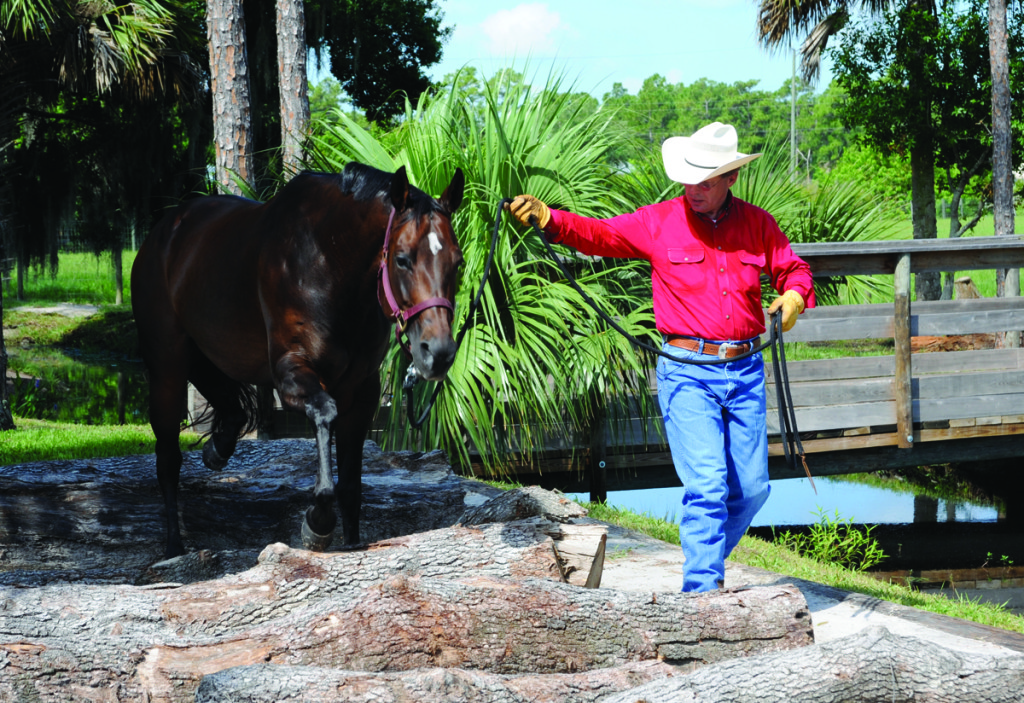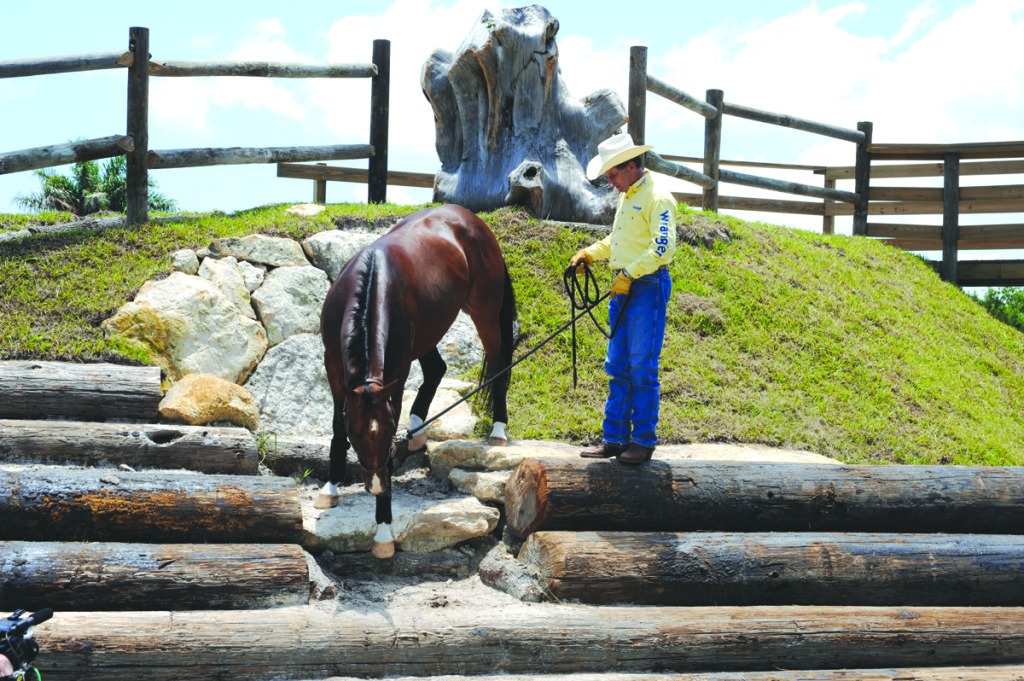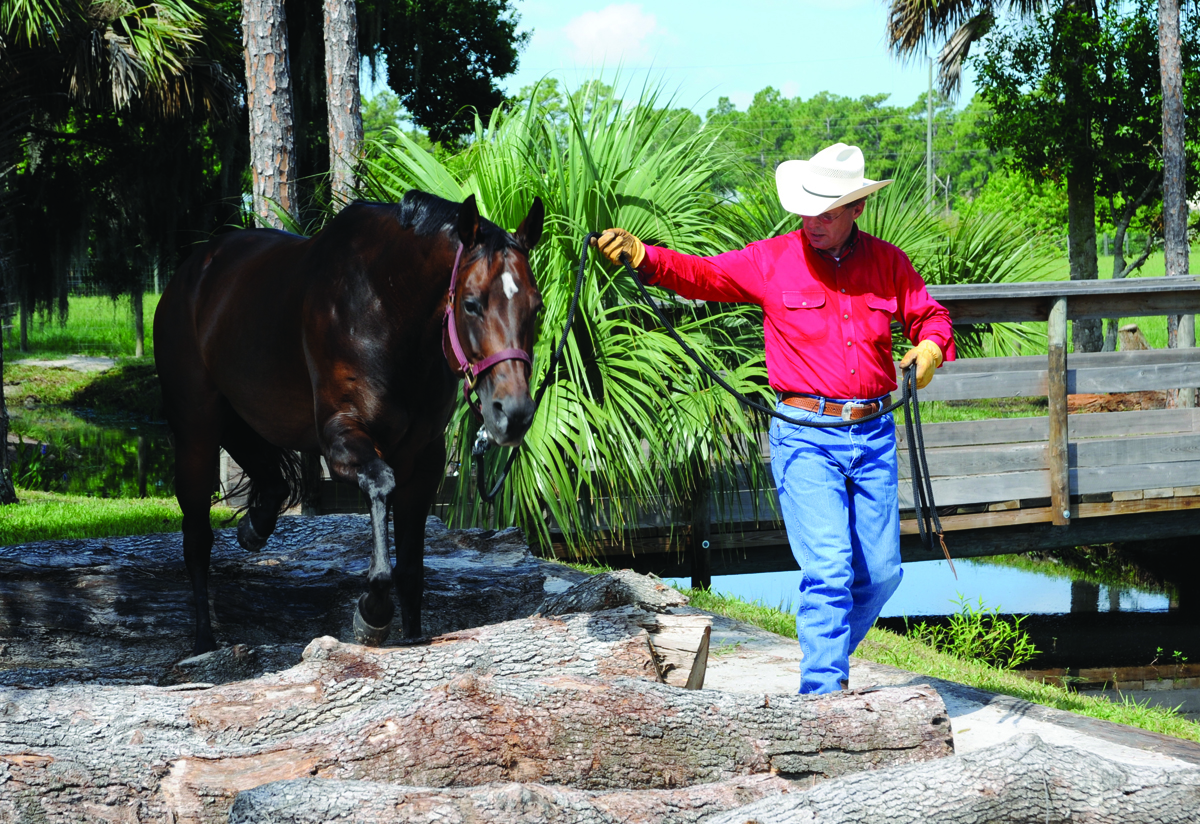Unity and Leadership Are The Keys
by Mark Bolender

Watching a great trail horse pick its way through difficult obstacles is wondrous and beautiful. It looks so natural and graceful that it seems anyone can do it. This, anyway, is the image a great rider and horse try to paint for the judges examining every movement in an Extreme Trail competition.
In reality, achieving this look is exceedingly difficult and requires true unity of horse and rider. The sport of Extreme Trail highlights this unity of horse and rider brilliantly.
Training a horse properly takes time, patience and understanding. The result is a rider in-balance with his horse.
The first step to getting horse and rider in balance is to understand the horse and to enter its world. When you watch horses interact in the herd it’s very clear that they have simple rules, all of which are driven by instinct. This instinct motivates them to select a leader who they follow and become eager to please. As trainers we can learn from this and use it to our advantage.
Thus, my simple rules of training are based upon the horses’ world and their way of life.
Horses have no equals in their world; all are part of a hierarchy.
Horses are natural born followers, but only if one leader is clear and consistent.
A horse will try to please those higher in ranking in the “pecking order.”
Instinct drives the first three rules.
A horse’s instinct allows him to read the slightest change in a leader’s face and body language. As a trainer, what you do in the slightest way can cause your horse to reject or accept you as a leader. I’ve found that the less I do, the more I get because the communication is clearer.

I like to start training the horse from the ground, not from the saddle. First I establish my “Bolender Bubble” by taking the place of the alpha mare. This is not a physical game but a mind game, and it’s the most important step. It’s done subtly but has profound effects.
I will make sure that I can move the horse’s shoulders and haunches with little more than a thought. The “alpha” (leading) mare does not move her feet for other horses and walks a straight line from point A to B. For instance, if horses are between her and where she is going she does not walk around but right through the herd. The underlings will move out of the way. Thus, if you move without clear, pointed direction then the horse will perceive you as an underling, not the leader.
In teaching obstacles, I will begin to drive the horse in front of me over poles and through cones to build confidence and boldness. This is different than leading the horse, as I am compelling the horse to move her feet through my own direction.
When the horse is moving in a willing manner over poles and through cones, I then raise the bar and begin to drive him over more difficult obstacles such as logs, rocks, water and the teeter totter. The reason I do this in training is to teach the horse to concentrate on the obstacle and not on the rider.
I always make sure to not put too much pressure on the horse. Patience is everything. You can do great harm and take away the horse’s joy if you try to master the Extreme Trail obstacles too fast. Short sessions, about 30 minutes each, will give better results than long stressful ones. As the horse navigates an obstacle a little better than the day before, then you can stop; he will meet you at the stall door with a willing attitude.
Once the horse is moving through the obstacles enthusiastically then it’s time to start training from the saddle.
Published in December 2010 Issue

Mark Bolender is the nation’s leading expert in Mountain Trail, Extreme Mountain Trail, and Competitive Trail. He’s a three-time National Champion and one of the most popular trainers in the country. Today, Mark’s unique style of horsemanship has made the Bolender brand synonymous with these disciplines.
Mark has written for numerous national magazines and authored the popular book, Bolender’s Guide to Mastering Mountain and Extreme Trail Riding. Mark and his horse Checkers hold the sport’s all-time highest honors. Checkers was distinguished by becoming the 2020 Breyer Horse.
Mark and Lee Bolender founded the International Mountain Trail Challenge Association (IMTCA) to promote these sports. Today, the IMTCA trains judges, coordinates activities, and maintains certifications around the world.
Mark owns and operates Bolender Horse Park in Washington State. Mark has also designed and built Mountain Trail courses around the world.

